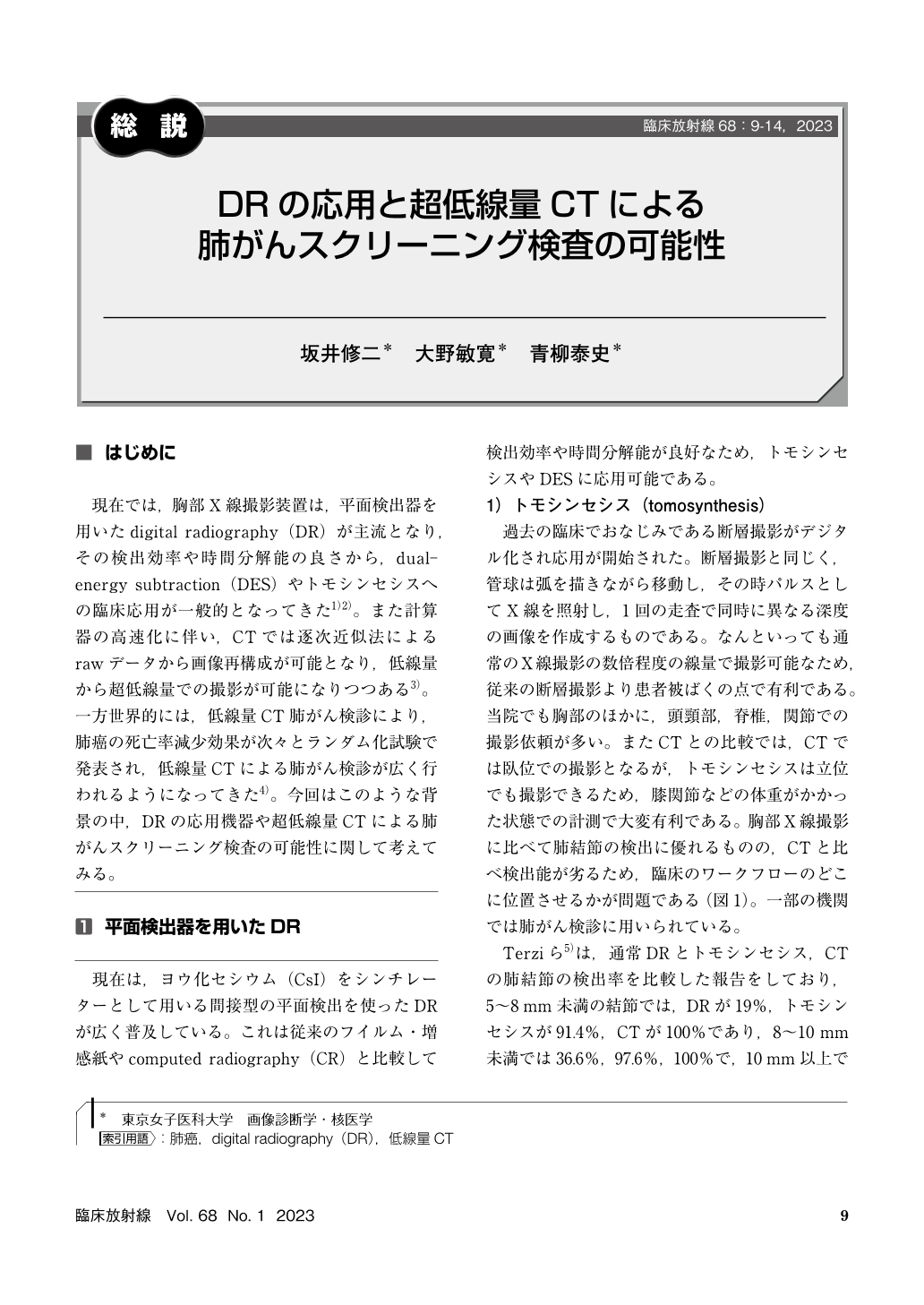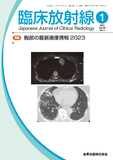Japanese
English
- 有料閲覧
- Abstract 文献概要
- 1ページ目 Look Inside
- 参考文献 Reference
現在では,胸部X線撮影装置は,平面検出器を用いたdigital radiography(DR)が主流となり,その検出効率や時間分解能の良さから,dual-energy subtraction(DES)やトモシンセシスへの臨床応用が一般的となってきた1)2)。また計算器の高速化に伴い,CTでは逐次近似法によるrawデータから画像再構成が可能となり,低線量から超低線量での撮影が可能になりつつある3)。一方世界的には,低線量CT肺がん検診により,肺癌の死亡率減少効果が次々とランダム化試験で発表され,低線量CTによる肺がん検診が広く行われるようになってきた4)。今回はこのような背景の中,DRの応用機器や超低線量CTによる肺がんスクリーニング検査の可能性に関して考えてみる。
Tomosynthesis uses pulse X-ray projection and a computer-controlled tube mover, and special reconstruction algorithms to produce section images. Tomosynthesis improved sensitivity in the detection of CT-proven lung nodules compared with conventional radiography. Dual-energy subtraction(DES)using digital radiography distinguish bone from soft tissue. DES has been shown by several observer performance studies to improve the observers’ ability to detect and characterize lung nodules. Furthermore, we can also use Bone Suppression Imaging(BSI)produced from single conventional DR images. BSI suppresses rib and clavicle using deep learning technique. Ultra-low-dose CT with iterative reconstruction have been used for lung cancer screening and a diagnostic ability comparable to low dose CT with respect to the detection of pulmonary nodules. In this review, usefulness of these modalities with low exposure dose for lung cancer screening will be explained.

Copyright © 2023, KANEHARA SHUPPAN Co.LTD. All rights reserved.


